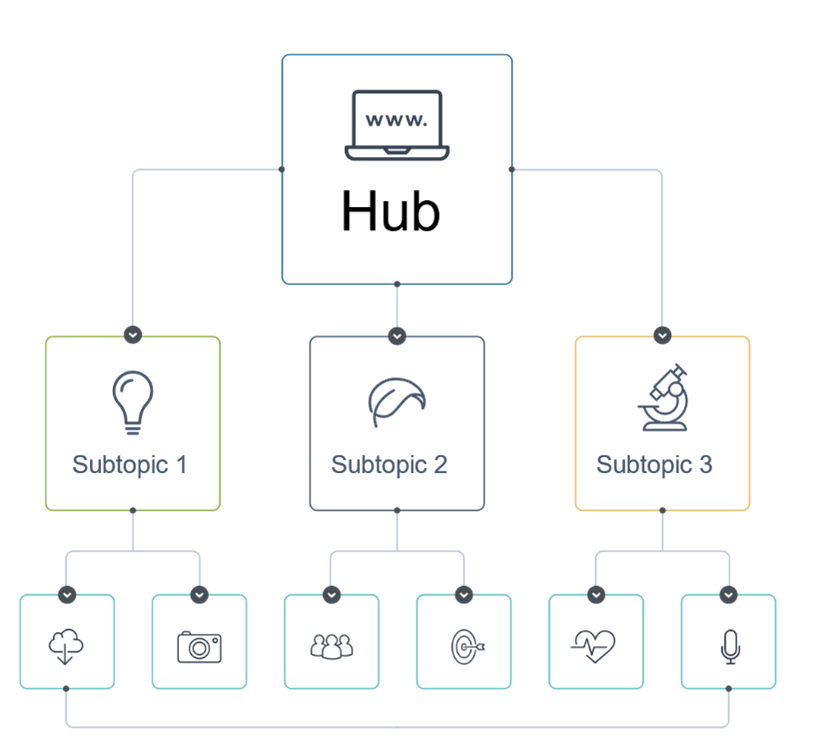
Christopher Lott
June 11, 2024
One of the favorite questions we hear from our clients is “Do you do SEO?”
The answer seems simple at first: “Yes, we sure do.” And you should, too. Search engine optimization is a way of life for organizations that want to ensure their website content is reaching the right audiences who will take action—now or in the future.
But SEO doesn’t mean the same thing to everyone. Often, when a client asks if we “do SEO”, they’re really asking “Can you get my pages to rank higher than my competitors’ content?”
The answer is yes…but.
There isn’t a button we can push to make your SEO dreams come true. Real solutions are long-term, and they hinge on the competitiveness of the search terms in question and your domain authority. Your content needs to answer your audience’s questions with relevant content that’s not generated by AI or other unoriginal tactics.
It’s a long game that you must play all the time—something clients may not fully absorb as they’re managing excited stakeholders who are clamoring to be found for obscure search queries or outdated keywords.
But it’s true, and when done right, SEO works. Research from Forbes Advisor shows that more than 45% of all search engine clicks come from organic search results. Your audience is more likely to trust the results that come from your hard SEO work than from paid advertisements. SEO excellence, then, results in more traffic to your website, more conversions, and more success.
Below, we’ll talk through the four pillars of non-technical SEO with some of Stamats’ industry experts. We’ll give you three actionable steps you can take today to improve SEO, get found in the way your audience needs, and satisfy your stakeholders.
Stu Eddins and Mariah Tang discuss the ins and outs of modern SEO on our podcast, “Did I Say That Out Loud?”
A decade ago, SEO was a very different business. Marketers who’ve been around likely remember the days of keyword-focused SEO. In those dark ages, top search results could be achieved by cramming in as many search terms as the text could bear. This was a formula for a frustrated audience.
Today, search engines recognize and reward content that is written for people. The algorithm deprioritizes keyword-stuffed and AI-generated content. As of May 2024, Google is starting to award top search links to limited sites with content that answers complex, specific questions.
Today, having quality content on the web is more closely related to having quality content in Time Magazine. High-quality content is original, answers readers’ questions with relevant context, and does so with authority, from either the author or the content itself. The search engine considers the audience’s question, the answer on the page, and the surrounding context when deciding which pages to rank first.
SEO is the sum of a whole lot of parts. Your website doesn’t necessarily rank in search results, your pages do. And they all work together. When your pages are all SEO-focused, they can all rise in search ranking.
There are lots of reasons your pages might not be working together, with content spread out over a dozen or more places. Maybe internal politics rule the day, maybe stakeholders can’t get their priorities straight, or maybe you just haven’t done the strategy work. For SEO success, you’ll need to overcome these competing priorities to create a cohesive message, otherwise, it’s like diluting soup with water. Just because there’s more doesn’t mean it tastes good.

For some clients, the solution to content chaos is often a Hub approach. With this method, a central “hub” story explores a central question that’s important to your audience in depth. This authority is extended by and interlinked to shorter “spoke” pieces of content that answer specific questions related to the hub topic.
Ideally, these pieces are published at the same time for maximum SEO attention that establishes topical authority and maps your content to the audience’s thought process: Big questions, refined to more niche questions. And you have all the answers.
The hub and spoke model is a smart choice to help your pages work together. Cumulatively, they can have a significant impact on how your content interfaces with the user experience which can result in major SEO gains when done right.
Backlinks have always been important, but the real special sauce for SEO is internal links. These links between pages and pieces of content on your site help everyone—humans and search engines alike—understand what goes together. Internal links tell us how one piece of content supports another, and they answer questions before we know we have them.
Internal links are also a vote of confidence that says, “Now you’ve read this, here’s something else you should consider.” This means it’s critical to make internal links relevant. Just because a piece of content is popular (or you want it to become popular) doesn’t mean it’s necessarily applicable to your audience. For the best benefit of readers and SEO, ensure internal links are robust and relevant.
Search is changing all the time, as Google brings innovations to market and user behaviors change in ways expected and surprising. For instance, more than 14% of all search queries are now phrased as questions, and users expect to find the answers right away. If you’re providing relevant answers to those questions, congratulations. You’re doing SEO!
The trick is…you have to keep doing SEO. Google and audiences are still changing, and you risk being left behind if you don’t keep up. Ensuring your content answers relevant questions is a daily task. Audiences want the correct answer right away, and they don’t want to read your whole webpage to get it.
If you’re giving that answer, you’re doing SEO. If you’re not, well…To quote our AVP of Digital Marketing, Stu Eddins, “Take action or don’t take action. Either way, you’re doing SEO.” That’s because the decision not to continually improve content is directly impacting your rankings in search.
Often when a stakeholder says, “I’m not ranking,” the first thing we’ll do after assessing their content is to consider how we can write variable blog content that might rise to the top and be a tide that floats all boats.
Blogs tend to rise very quickly in search results, thanks in part to their ability to feature fresh content users need now. Their content can be more specific than internal “evergreen” pages dedicated to products and services and can help your site establish all-important authority.
A blog story sometimes ranks right away for a specific topic, but a webpage covering the same ground might take a month, two months, or even six months to show similar results. There could be several reasons why:
Remember that blog content is variable content. The same URL can be updated (provided you didn’t use a URL with a date. You didn’t, right?) multiple times to give several angles on the story.
To keep content fresh and get a similar lift for more conventional pages, ensure you’re making regular updates to faculty, program, and condition/service pages to boost their SEO performance.
Consider this series of actionable steps you can take right now to improve SEO on your website.
Links have long been an important factor in SEO, and getting links from popular sites can help your site establish authority. Yet, on the whole, these backlinks are time-consuming and not all that relevant to modern SEO.
Instead, invest your time in shoring up links within your website.
Internal links help everyone who visits your site understand which content is related. They demonstrate that your content is supported by other information on your site, providing all-important context. Ensure the internal links on your pages are relevant to the content and that page, and your rankings will benefit.
Similarly, make your pages actionable for readers by including a relevant call to action that directs them simply and obviously to the next steps. As far as Google is concerned, giving the answer is good, but demonstrating next steps is great.
Ensure content is usable for the people who find it, by writing at a reasonable (sixth-grade) reading level. Often, this means simplifying content more than may be comfortable, especially if your site serves doctors, lawyers, or educators.
Eddins noted that these scholars can sometimes be focused on conveying their expertise rather than communicating with the broadest audience.
“Don’t talk over the heads of people,” he explained. “Understand the people who are reading your content are more likely to be standing in line at Starbucks waiting for coffee than having an introspective moment sitting at their desk.”
Creating content that audiences can use and search engines love usually means making sure it can be digested by the largest number of people. Don’t dumb it down. Instead, hold the audience’s attention and help them understand you have the answers to their questions.
Keywords are no longer the end-all and be-all of SEO. Yes, it’s important that your page contains the search terms people use, and it can be helpful to organize your content according to these terms. But stuff the stuffing. It doesn’t work.
Instead, think of keywords in terms of search queries, or questions. This is the information your audience needs. When your content answers these questions, your pages rise in the rankings. When a competitor answers those questions, their pages do better instead.
Do we do SEO? You bet we do.
Do you?
Search engine optimization is an ongoing effort to match your website’s content to what your audience is searching for. When you answer relevant questions, tell compelling stories, and provide helpful context, Google and other search engines will notice.
Are you ready to rev up your SEO? Stamats experts are here to help. Reach out today.